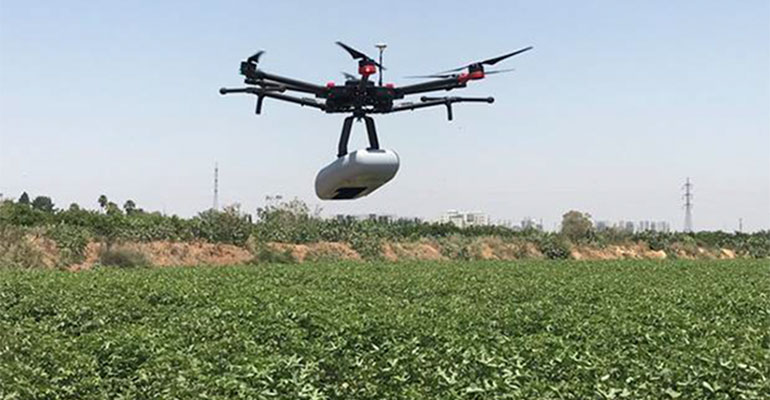
With the growth of precision ag technologies, many companies are lining up to provide their own unique technologies in the space.
Partnering with chemical and equipment companies can provide a distinct advantage over the competition.
Taranis, an ag technology startup based in Israel, partners with companies that find value in their remote field scouting technology where drones and planes travel at high speeds capturing images of crop issues in the field. Now, they are partnering with crop protection company Adama on a full-service solution to optimize farming practices using their precision ag technology.
Adama, owned by Chinese multinational ChemChina, may not sound like a household name, but their products are well-known. If you’re talking herbicides, think atrazine; fungicides, Bravo or Captan; or insecticides, chlorpyrifos.
Dani Harari, senior vice president of resources and strategy at Adama, discussed the new partnership in a news release: "We are happy to expand our partnership with Taranis to provide growers and ag professionals with a solution that enables the effective and efficient use of agricultural inputs, an important part of every farmer's success. The combination of Taranis’ innovative precision technology and extensive database of crop threats, together with Adama’s vast portfolio, global reach and deep domain expertise will further extend the value we bring to farmers all over the world,"
Precise drones
Taranis utilizes 100 drones and planes that can capture images of weeds, insects, diseases and fertilizer deficiencies in crops all the way to the sub-millimeter level. The drones can capture these images while traveling at speeds in excess of 200 kilometers per hour — 124 miles per hour — enabling it to capture lots of images on more acres. A pod stabilizes the camera to create ultra-high-resolution images all the way to the leaf level, providing specific points where the crops are being scouted.
Utilizing artificial intelligence, they can analyze the images and provide accurate insights from the field directly to the farmer. According to a press release, the company’s technology is already being used on 20 million acres worldwide.
Tali Brousard-Shimer, marketing director at Taranis, said the company focuses mostly on corn, soybeans, wheat and potatoes on large farms in the U.S. where farmers use their technologies through partnerships they have with John Deere, Wilbur-Ellis and Nutrien. They also partner with BASF in Brazil where they have access to that company’s client base.
She calls the company’s partnership with Adama “a very natural partnership.” The ultimate goal for the company, she said, is to have a foothold in automated farming.
“We can better estimate and understand and plan for the yield that farmers will expect by the end of the year,” she said. “The whole idea of precision ag is the precise ability to plan and monitor and treat the fields to hopefully max that yield.”
Growing precision market
According to industry analyst Markets and Markets, the precision ag market, valued at $5.1 billion in 2018, is expected to grow to $9.1 billion by 2023 with North and South America accounting for the largest share of the worldwide market.
Precision farming is segmented into many areas, including yield monitoring, field mapping, crop scouting, weather tracking and forecasting, irrigation management, inventory management, farm labor management, financial management, and others, according to Markets and Markets. Yield monitoring is currently the most widely used application in farming.
About the Author(s)
You May Also Like






